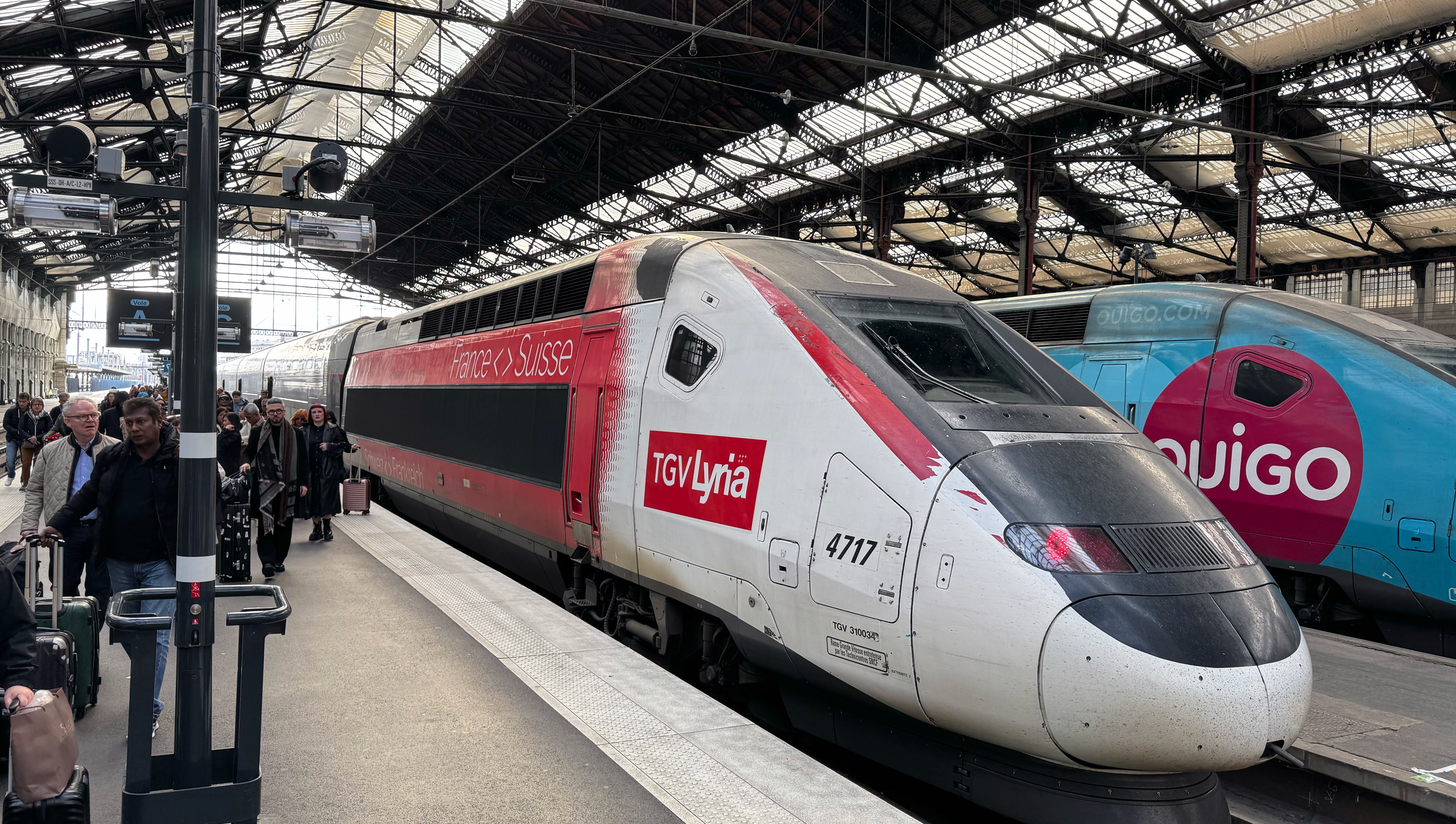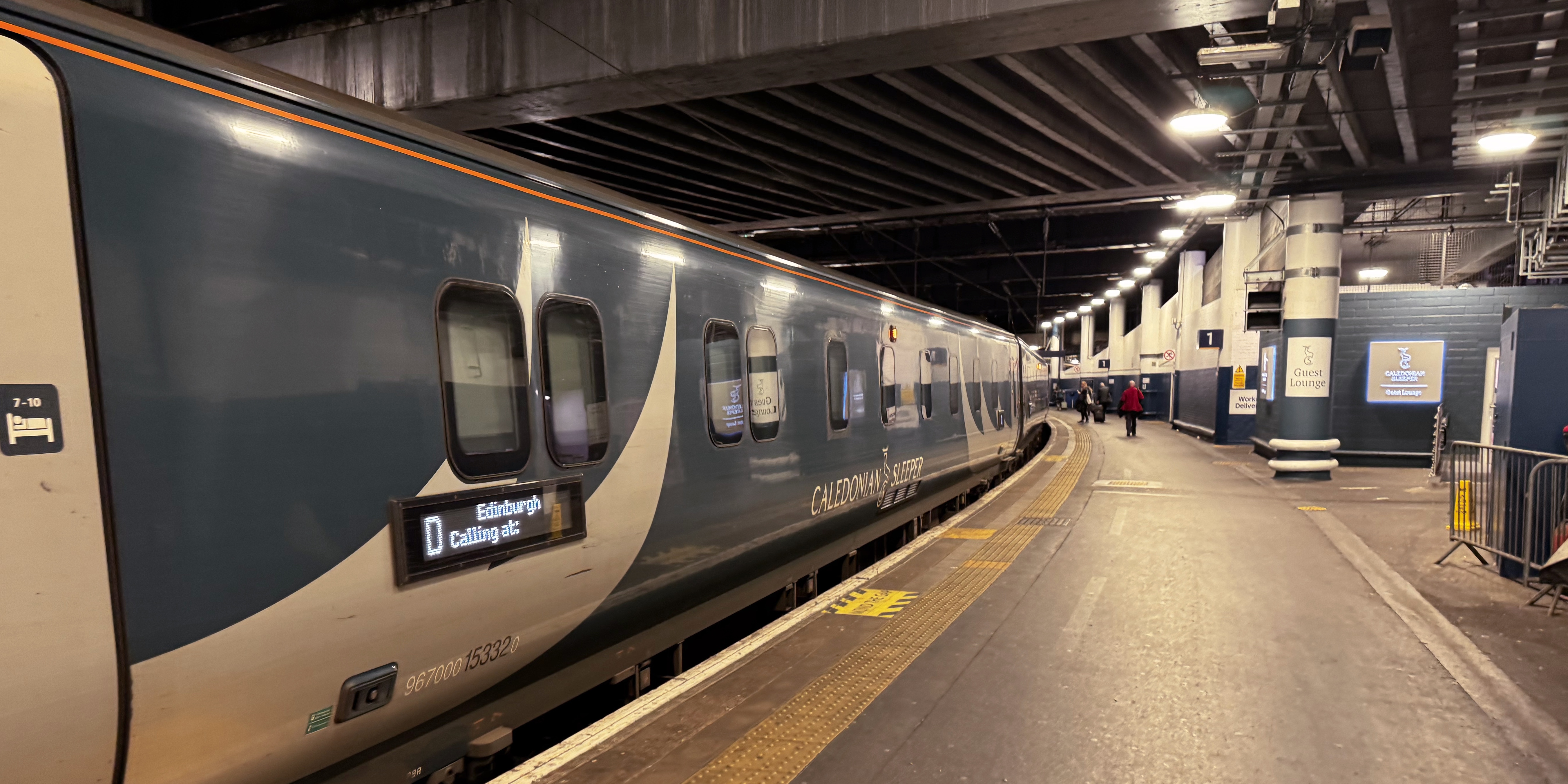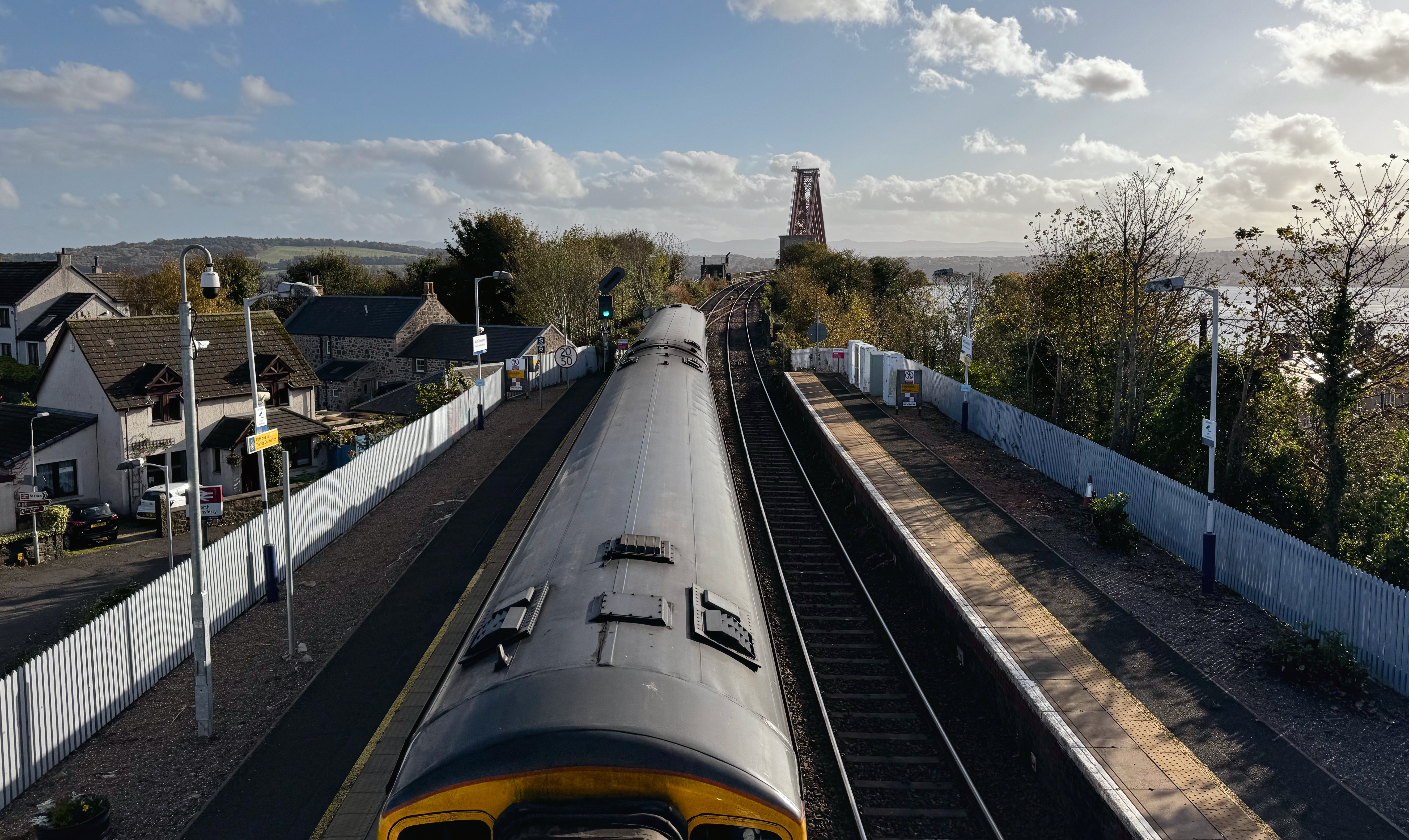Travelling by train is just better than flying. No airports, fewer emissions and generally a more pleasant experience. Typically, a bit slower, but for travelling around in Europe just as good.
Me personally, I much prefer it to flying, as I don’t have to be at an airport, I don’t have to check my luggage, and all the time. It is much more interesting to see outside than in a plane. Moreover, there are much less stupid rules around luggage and the same.
And recently, there has been a very welcome trend of having more sleeper trains again. Sleeper trains are, in my opinion, one of the best ways to travel, as one doesn’t really lose any time travelling — you simply sleep while the train moves through the night.
My train adventure through Europe

The TGV bringing me directly to Paris
Last year, I embarked on an ambitious journey from Switzerland to Edinburgh by train. The route took me from Switzerland to Paris, then to London, and finally up to Edinburgh. The London to Edinburgh leg was on the Caledonian Sleeper, a truly magical experience.

Boarding the Caledonian Sleeper in London
Waking up to the Scottish countryside rolling past my window while sipping tea in bed was incomparable to any flight experience. The gentle rocking of the train had lulled me to sleep (and also woken me up a few times), and I arrived in Edinburgh refreshed and ready to explore, rather than exhausted from airport stress.
The Caledonian Sleeper has these cute little cabins with big beds that fold away during the day. They’re small, sure, but there’s something deeply satisfying about having your own little space on a moving train. I splurged for a room with an en-suite bathroom and shower, which felt ridiculously luxurious compared to being crammed into economy class on a plane.
A Glimpse of Scotland by Rail

Scotsrail looking towards the iconic Queensferry Crossing
While my train journey within Scotland was brief – just a few stops out of Edinburgh – it still offered moments of genuine beauty. The highlight was undoubtedly crossing the Firth of Forth on the railway bridge near the Queensferry Crossing. There’s something particularly satisfying about train bridges; you’re suspended above water with panoramic views that you simply can’t get from a car.
The Scottish countryside, even just outside Edinburgh, has this moody, atmospheric quality that seems perfectly suited to train travel. The low clouds, the sudden bursts of sunlight illuminating green hills, the old stone buildings that have weathered centuries – all of it slides past your window like a living documentary on Scottish history and landscape.
I didn’t venture into the famed Highlands by train (something for next time), but even this short journey gave me a taste of why Scotland is considered one of Europe’s most scenic train destinations. The regular service trains might not have the romance of the sleeper, but they’re comfortable, generally on time, and the views require no extra payment.
Next Stop: Budapest
This May, I’m planning another rail adventure to Budapest. The route will take me through some stunning European landscapes, even though I will be asleep for most of the time.
I’ve been plotting the journey on Seat61, which is basically the bible for European train travel. The plan is to take a sleeper from Switzerland to Budapest, spend a day in Vienna on the way home. The Budapest-Vienna stretch follows the Danube for part of the way, which should make for some spectacular views.
The Frustrating Reality
Despite all these benefits, train travel in Europe comes with significant frustrations. The booking process is unnecessarily complicated. Unlike air travel, which has centralized booking systems like Skyscanner or Kayak, train bookings often require navigating multiple national railway websites, each with their own quirks and limitations.
For my Scotland trip, I needed to use three different websites:
- SNCF (French national railways) for Switzerland to Paris
- Eurostar for Paris to London
- Caledonian Sleeper for London to Edinburgh
Each had different booking windows (some let you book 6 months ahead, others only 3), different fare structures, and different user interfaces ranging from “pretty decent” to “was this designed in 2003?”. I spent an entire evening just figuring out the optimal combination of trains and fares.
Tools like Trainline and Rail Europe try to fill this gap, but they don’t cover all routes or operators, and sometimes add booking fees that make an already expensive journey even pricier.
The European Union has recognised this problem, but progress toward a unified booking system remains slow. It’s 2025, and we still can’t easily book a multi-country train journey in one go. Ridiculous.
The Cost Factor
Then there’s the cost factor (not to be confused with X-factor). Train travel can be surprisingly expensive, especially when booked last-minute. My train from London to Edinburgh cost nearly double of what my flight cost to fly back from Edinburgh to Switzerland, even accounting for airport transfers. The pricing structures are often opaque, with dramatic differences between booking three months versus three weeks in advance.
That said, initiatives like Interrail can make multi-country journeys more affordable, though they come with their restrictions and planning challenges. I used an Interrail pass for a trip through the Scandinavian countries a few years back, and while it saved money, the seat reservation system was a puzzle in itself.
The Little Joys
Despite these frustrations, train travel offers moments of joy that flying simply can’t match. Like the time I met interesting travellers on the train in Sweden or my backpack falling down from the storage area in Denmark. Or watching the sun set over the French countryside while reading a book, with no announcements about electronic devices or seatbelts.
On my Scotland trip, I met a group of Scottish people travelling back home from a wedding in London, sharing their disappointment about the lack of Scottish traditions at this wedding with me.
The Environmental Angle
The environmental benefits are substantial — according to the European Environment Agency, rail travel produces about 14g of CO2 per passenger kilometre, compared to around 285g for air travel. That’s a difference I can feel good about.
I’m not perfect — I still sometimes fly when time or practicality demands it. But whenever possible, I choose trains, even with all their frustrations. It feels like a small act of resistance against our speed-only-matters, convenience-at-all-costs culture.
A Hopeful Future?
There are signs of improvement. New sleeper routes are opening up, like the European Sleeper connecting Brussels to Prague. We could also get a direct night train to Barcelona at some point, if the politicians stop playing that much stupid politics. The EU’s Green Deal includes plans to boost rail travel as part of climate initiatives.
Apps like Omio and Raileurope are getting better at cross-border bookings, though they’re still not perfect. And there’s growing pressure from climate-conscious travellers for better rail options.
Worth the Hassle?
So yes, travelling by train in Europe is unnecessarily hard — but it’s a hardship I’ll gladly endure for the richer travel experience it provides. There’s something deeply satisfying about watching the landscape gradually change as you cross borders, rather than simply teleporting from one airport to another. You experience the journey, not just the destination.
I’ll report back after the Budapest trip with fresh tales of booking woes and beautiful views. Simultaneously, if you’re planning a European train adventure and want advice on navigating the Byzantine booking systems, drop me a message. I’ve become something of an unwilling expert through sheer necessity.
And if any railway executives/decision makers or politicians happen to be reading this: please, for the love of all that’s good, give us a single website where we can book any European train journey end-to-end. I promise we’ll use it.